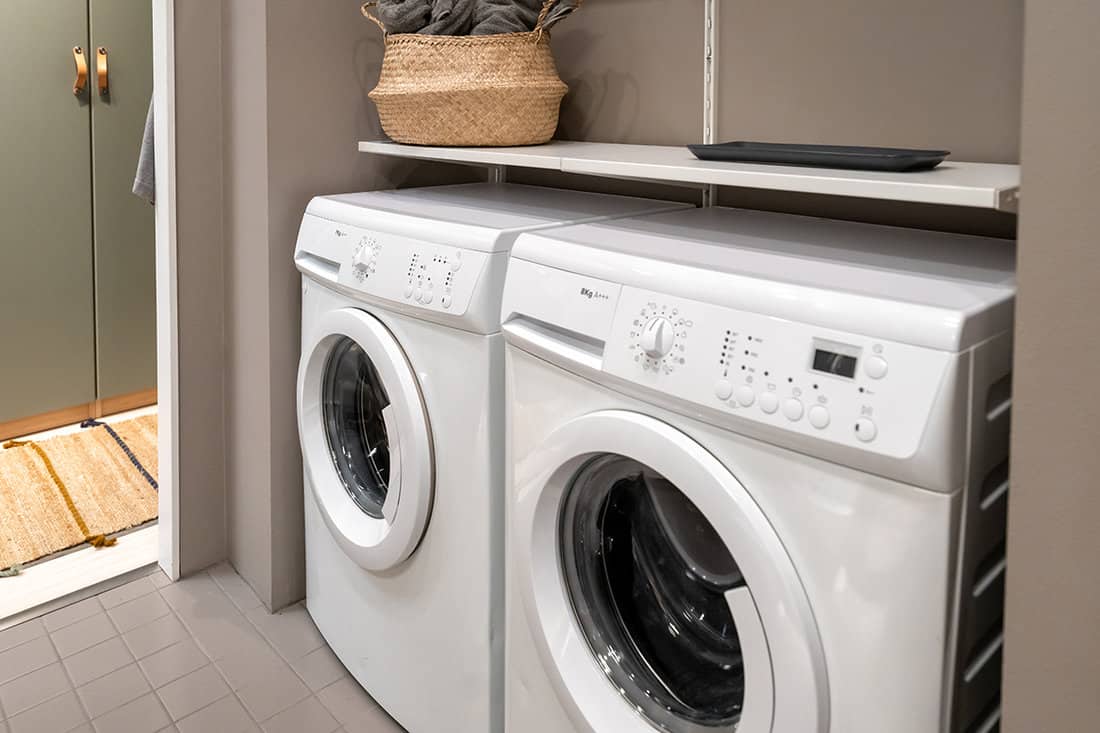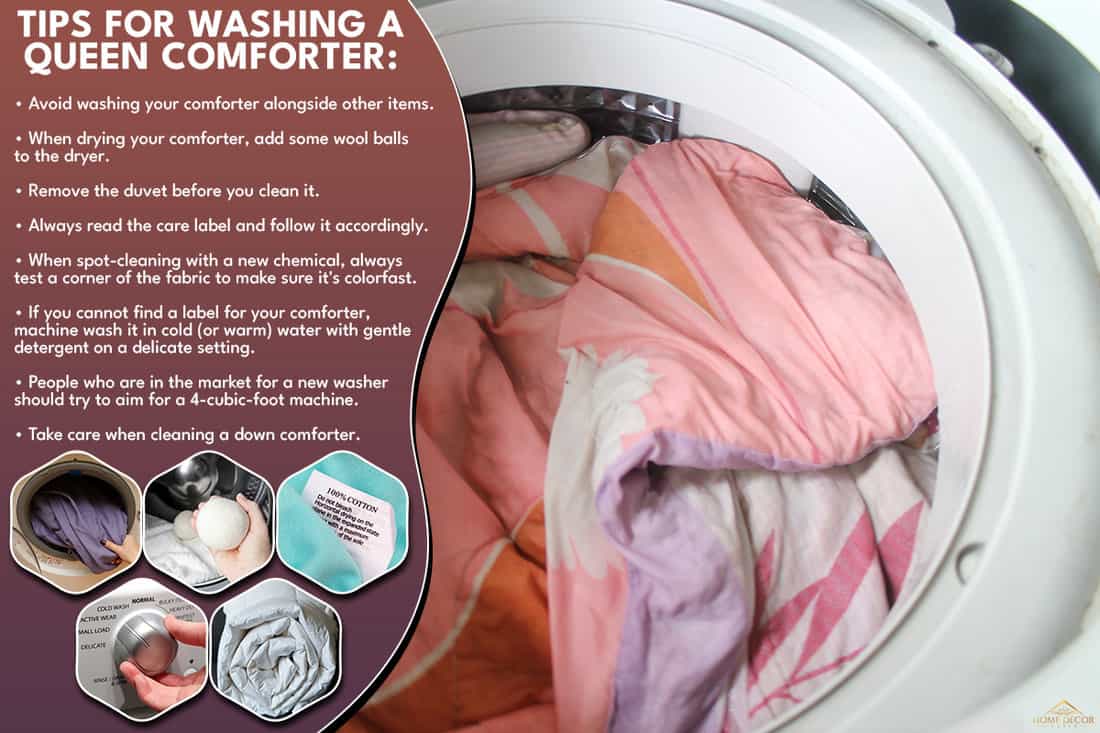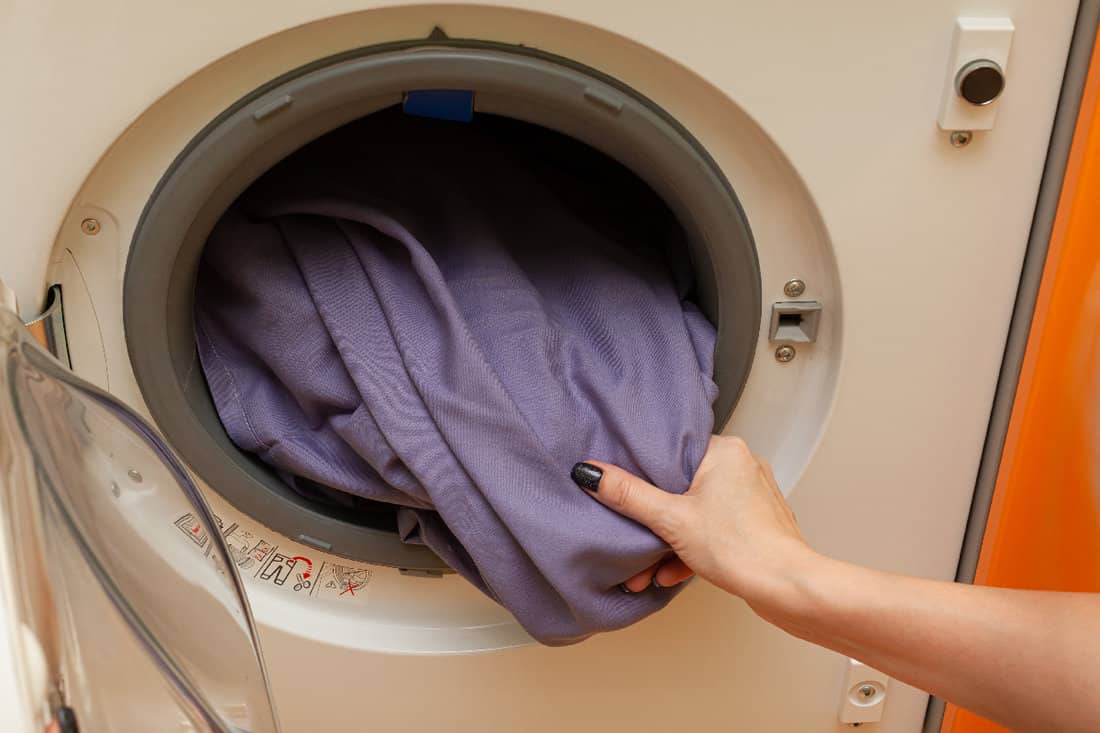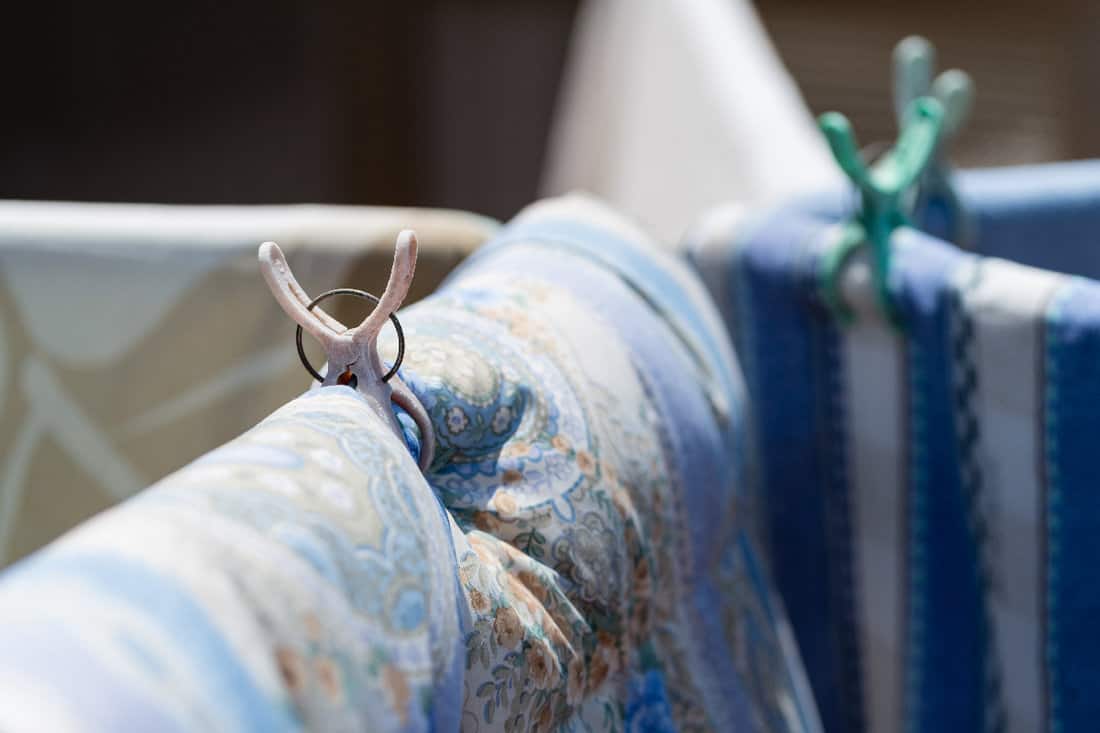Having a washing machine in the comfort of your own home is amazing, not to mention convenient. When you have a queen-sized bed, getting that bedding washed can be a hassle. If you don't have a big washer, then you might not be able to fit all the bedding you want. This is doubly true for comforters. Are you wondering whether your washer can handle a queen comforter? We did some research to help you out.
In order to wash a queen comforter, you will need a washer with 3.5 cubic feet of space with no agitator. If your washer has an agitator, then the cubic footage will increase slightly. King-size comforters need 3.8 cubic feet. Dryers will need roughly the same amount of space as a washing machine would.
Before you assume that you can cram your comforter in your washer, it's wise to know how much space you should use. This guide will help you figure things out and determine the best move for your laundry. Just keep reading!
What Size Washer Do You Need For A Queen Comforter?
The bare minimum size of a washer that can handle a queen comforter is 3.5 cubic feet. This is assuming that your washer is high-efficiency and doesn't include an agitator to toss things around.

Agitators take up a lot of space inside a washer, so you have to account for their inclusion. The bare minimum assumes that your comforter isn't overly fluffy. If it is, then you may need a larger machine.
Machines with agitators can be very rough on comforters, possibly to the point of making them tear. If you want to use a washer with an agitator, get a machine that is at least 4 cubic feet in size, and keep your machine's setting to delicate.
Pro tip: If you are worried about tearing your comforter, send it to a laundromat. Certain types of comforters are made of delicate material and must be "dry cleaned only." These include antique comforters as well as comforters that have "DRY CLEAN ONLY" written on the label.
How Can You Tell If Your Washer Is Too Small To Wash Your Comforter?
We sometimes add affiliate links and content that was curated and created by our team with the help of advanced ai tools to help showcase the best design styles.

If your washer is smaller than 3.5 cubic feet, it's safe to say that your queen-sized comforter will not fit. A quick look at your owner's manual will tell you how large your washer is.
If that doesn't work, you can also search for your washer's make and model online to learn more about it. Still not finding much info? You can calculate the capacity of your washer tub by the following formula:
3.14 x (radius) x (radius) x depth
A general rule of thumb is that you should not struggle in order to put your comforter into the washer. If you find yourself cramming it in there, chances are that your washing machine isn't the right size for your comforter.
Should you get to the point that you can't even close the washer door, just take the comforter out and send it to the cleaners.
What Size Dryer Do You Need For A Queen Comforter?
Dryers and washers are often sold in pairs because the volume you need for a washer is usually the same that you need for a dryer.
This means that most queen-sized comforters will work well in a 3.5-cubic-foot dryer, too. With that said, adding a little extra room is always a good idea. If you are laundering very fluffy comforters of this size, then the best thing that you can do is opt for a 3.8- to 4-cubic-foot dryer.
Tips For Washing A Queen Comforter

Having a queen comforter is a nice little luxury, but cleaning them can be a hassle. These tips will help you make the most of your cleaning time:
- Avoid washing your comforter alongside other items. A single comforter is a full wash load for most washers. Unless you have a large (over 5 cubic feet) washer setup, you should assume that the most your washer can handle is a single comforter and maybe a bedsheet.
- When drying your comforter, add some wool balls to the dryer. The balls will bounce around, giving you a fluffier comforter that feels amazing right out of the dryer. You can also add half an extra scented dryer sheet for that extra softness.
- Remove the duvet before you clean it. On a similar note, make sure that your comforter is repaired and spot-cleaned before you put it in the washer. Otherwise, your comforter may look worse after time spent in the wash.
- Always read the care label and follow it accordingly. Care labels are there for a reason. They help prevent damage to your clothing and sheets. If you notice that your label says that it's best to leave it to the dry cleaners, listen to that advice. You might lose your comforter otherwise.
- When spot-cleaning with a new chemical, always test a corner of the fabric to make sure it's colorfast. Comforters can be sensitive to certain chemicals. If you want to protect your richly-colored bedding, you'll follow the instructions to the letter.
- If you cannot find a label for your comforter, machine wash it in cold (or warm) water with gentle detergent on a delicate setting. Drying it will require a delicate setting too. If at all possible, hang the laundry outside to dry. That's the most gentle way to get your comforter dry, even if it takes a while.
- People who are in the market for a new washer should try to aim for a 4-cubic-foot machine. This is a good way to ensure that your comforters can be washed with ease. Besides, it'll make your laundry room look more filled out.
- Take care when cleaning a down comforter. Down comforters require the coldest water possible, no bleach, and extremely gentle laundry detergent.
What Size Washer Do You Need To Wash A King-Sized Comforter?

To wash a king-sized comforter, you need a minimum of 3.8 cubic feet as your washer capacity. Some comforters, particularly overstuffed ones, may need as much as 4 cubic feet.
How Big Is A Typical Washing Machine's Tub Capacity?
A typical washing machine's tub capacity is slightly over 3 cubic feet. Top loaders are typically 4.2 to 4.5 cubic feet.
Standard washers are between 3.1 to 3.5 cubic feet, with 3.5 cubic feet being the most common. If you have a compact washing machine or a "portable" washer, then it will be between 2 to 3.1 cubic feet in capacity.
What Temperature Should You Dry Your Comforter At?
Comforters can be heat sensitive. Ideally, you'll follow the directions on your comforter's tag to help care for it. If your comforter doesn't have a tag, it's best to assume that your dryer should be set to low-medium heat.
Is It Safe To Wash And Dry A Down Comforter At Home?
Not too long ago, washing a down comforter was not a smart thing to do at home. It was commonly sent to a laundromat because washer technology wasn't quite where it is now.
Today, it's generally accepted that you can wash down comforters at home as long as their tags don't specifically tell you they're dry clean only.
With that said, washing a comforter made with this material can be trickier than other types of comforters. Down has a tendency of trapping soap and softeners, so you might want to decrease the amount of soap you think it needs.
Moreover, drying down can be difficult because feathers can emit a foul smell while they dry. Check your comforter's label to find out how to handle this.
How Long Does It Take To Dry A Down Comforter?

Down may be snuggly soft, but it is not an easy thing to dry. It can take up to three hours to properly dry a down comforter. If you want to avoid a higher electric bill, remove the comforter when it's mostly dry. Then, hang it outside to dry or lay it flat on an open table.
In Closing
Doing laundry always requires a little attention to detail, and sometimes, you can't always find the details you need on a tag. One of the hardest things to figure out deals with whether your washing machine is big enough to handle the comforters and cushions that you want to launder.
Thankfully, there is some good news here. The majority of standard washers will be able to handle a queen-sized comforter without too much of an issue. So, that's one thing less that you have to worry about.
Before you go, be sure to take a look at these guides:
